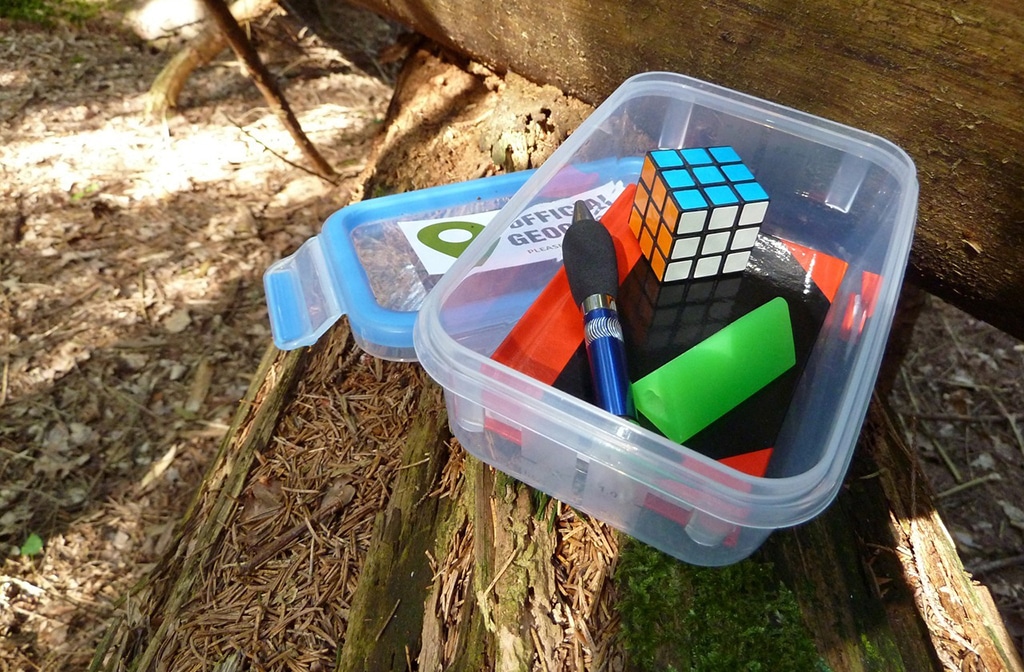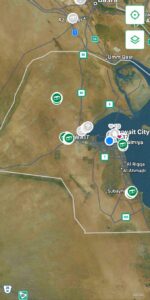By Zaid Aboobacker
KUWAIT: Geocaching is an outdoor recreational activity that involves individuals using GPS receivers or mobile phones in conjunction with navigational techniques to hide or locate containers known as “geocaches” or “caches” at precise coordinates. This activity bears a resemblance to the classic household game “treasure hunt” but operates on a much larger scale, spanning entire countries, with a global count of active caches exceeding 3 million as of 2023. Kuwait hosts numerous caches in diverse locations, including Kuwait City, Salmiya, Salwa, Jahra and even some unexpected sites like certain military bases.
It’s important to note that caches within military bases are restricted to individuals with proper identification, so regular citizens cannot interact with these geocaches. The first cache in Kuwait, called “Ya Darina Ya Kuwait”, was placed in 2002, two years after the geocaching platform was launched. It is located in Salmiya, and the coordinates of the cache can be found through the Geocaching app, which is the most popular geocaching platform. Various types of caches exist, with the traditional cache being the most popular.
In a traditional cache, the exact coordinates of the cache are provided, and users hide and seek a container that typically contains a logbook to record anyone who has found the cache and various surprises. These surprises can include antiques, toys, old currencies and coins, trinkets, souvenirs and sometimes even money, although sentimental items are usually featured. A multicache consists of one or more stages, each of which contains the coordinates for the following stage. The final stage of the multicache contains a logbook and a physical container that holds items. Both traditional and multicaches allow users to add or remove items from the containers to surprise other geocachers, but taking items usually requires you to replace them with something of equal or greater value.
A mystery or puzzle cache requires users to solve a puzzle to obtain the precise coordinates of the geocache. These puzzles can range from simple math problems to more challenging ones. Completing these puzzles is a requirement before logging the find online. Examples of challenge rules include finding a certain number of caches of a specific category or within a certain time frame or discovering a cache for each day of the year. Night caches, a type of mystery cache, are multistage caches meant to be located at night. Geocachers follow a series of reflectors with a flashlight to find the final cache location.
Another interesting type of cache is a virtual cache, which provides coordinates for an unusual or interesting location, often with a description of an item such as art, a sculpture, or a scenic view. Adventure Lab caches, a type of virtual cache, typically consist of 5 or 10 waypoints, with each waypoint representing a “cache find”. These waypoints are often designed as walking tours of a city or park, with a theme that showcases the history of a small town. A geocache event is one that geocachers plan and attend.
While not a true cache, geocaching platforms treat it as one because it can be “found” by attending the event. Event caches must be published no less than 14 days before the planned event date and must last longer than 30 minutes, typically lasting between 1-2 hours. Variations include mega events with 500 or more geocachers or giga events with 5,000 or more geocachers. However, like any activity, there is a darker side to geocaching. Incidents can occur, often related to caches being hidden in dangerous spots or illegal items found within the cache.
Nowadays, caches must be approved by a volunteer at Geocaching HQ to be published and found by everyone. Notable incidents include three adult geocachers being trapped in a cave and rescued by firefighters in Rochester, New York, while searching for a geocache. In 2018, four people in Prague were searching for a cache in a 4 km long tunnel when a storm surge swept them to the end at the Vltava River, resulting in two fatalities. However, not all incidents have negative outcomes. In Benton, Washington, four individuals discovered a wrecked car at the base of a ravine in October 2016 while geocaching.
They noticed the driver was still inside and promptly called emergency services, who came to the rescue. Additionally, there are cases where geocachers knowingly take all the items in the cache without replacing them, but the unwritten rule among geocachers is to replace the items with something of greater value. As of August 2023, there are 49 caches spread across Kuwait. Geocaching has significant potential in Kuwait, as residents can hide and create new caches or find existing ones, all of which can hold a wide variety of surprises. While some caches exist in cities, increased participation in these activities can foster a new and active thriving geocaching community in Kuwait.













